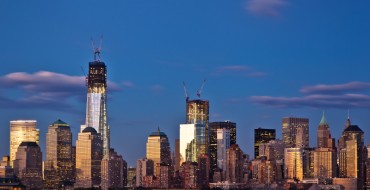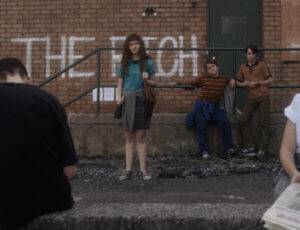When the planes struck the Twin Towers on September 11, 2001 a hole was ripped, not only in the famous New York skyline, but in the spirit of the American people. This attack not only struck a physical landmark, and the people within it; it took a shot at the symbolic power of the United States. When the rubble was cleared, the question of how to use the 16-acre site was up for debate. Richard Hankin’s film, 16 Acres (2012), looks at the history of the World Trade Centre site after 9/11. Far from being a simple decision, the site has been plagued by a battle between public, private and political interests.
The development of ground zero should never have been this difficult. Three weeks prior to the attack Larry Silverstein had signed a 90-year lease on the property. After the attack on September 11, Silverstein looked to rebuild, a decision which some felt came a little too soon. After the destruction of the towers, it became clear that he was not the only one with authority over the land. The decision on what was to be erected became more than a simple business decision, but one of national significance weighted with symbolic meaning. New York’s own populace was divided, each side passionately debating the need for the site to either be a) a permanent memorial or b) have the towers rebuilt taller than ever in a show of defiance. There was no shortage of opinions, with each person feeling they had a personal stake in the project. The final decision was to be split between Silverstein, the Port Authority, and the Governor of New York. All these competing interests did not lend to a healthy decision making environment. As time went on Silverstein did not fit the political narrative that Ground Zero had been saddled with. His private interests were portrayed as disruptive, and pinned as the reason why progress was not being made. This extreme indecisiveness was so rampant that today, thirteen years later, the site still remains incomplete.
Although it’s rather dry and long-winded, as anything surrounding bureaucracy is bound to be, there are a few areas that I found delightful. The film gathers the impressions of architects, and political commentators who act like a wise-cracking peanut gallery deriding the decisions of the site’s developers. 16 Acres also catalogues the numerous groundbreaking ceremonies and press events at Ground Zero, revealing the complete farce the project had become. It was all show with no progress because the amount of infighting made it nearly impossible to proceed. But still, whenever it best suited political interest, everyone would put on a happy face for the cameras and score more points to help boost their careers.
This film reveals the dark stinking core of the new Trade Center development. At its center is a rat’s nest of private and public interests. What Hankin makes clear is that the development of those 16 acres was not just about rebuilding an economic center, but creating a national narrative weighted with an ideological and symbolic significance. A competent look at a bureaucratic nightmare, 16 Acres throws back the curtain to reveal the many interests fighting for representation in what is to become an iconic American landmark.








